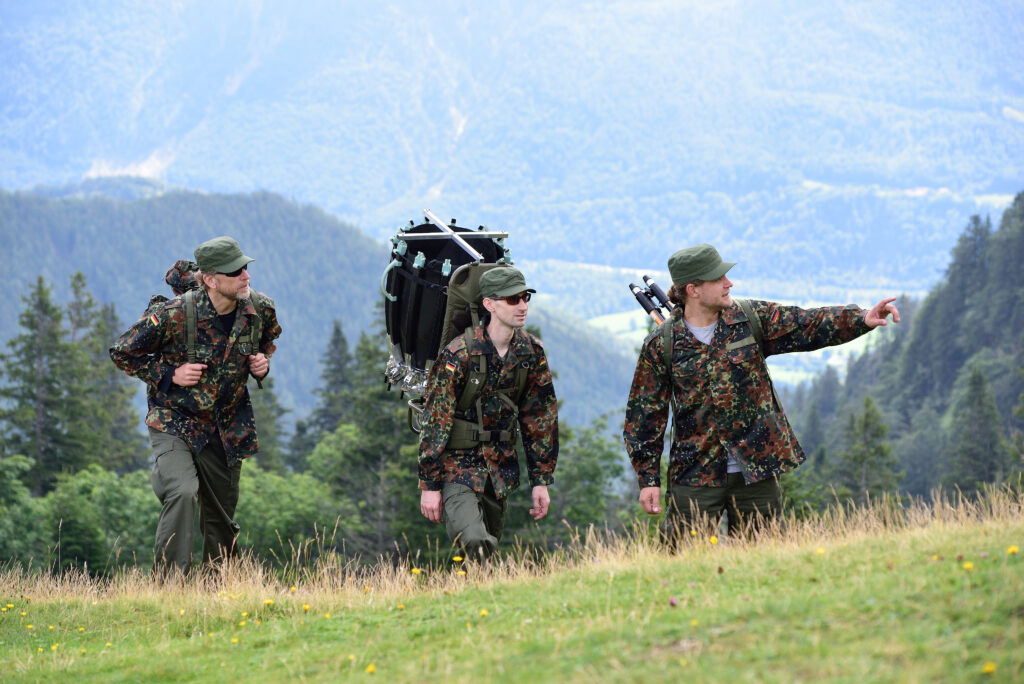July 2021
Life saver KEAN: Satellite communication “to go“
Space specialists close innovation gap for threatening situations
In extreme cases, humans can do without many things for a certain period of time: clothing for months, depending on the weather, food for about three weeks and drinking water for up to three days. There is only one thing he really needs urgently and immediately: the possibility to communicate.
This applies to all life-threatening situations of both a civilian and military nature, to missions on the front line of aid in disaster areas, but also to journalistic reporting from cut-off places, to expeditions in remote regions, to police and intelligence special forces and, of course, also to military missions.
To date, the communications technology market for similar applications has been dominated by products with limited range, vulnerability to jamming and/or unwieldy dimensions and weight that can only be handled by vehicles.
To change this, under the consortium leadership of the Munich-based aerospace specialist for antenna technology HPS (Munich) the following partners have joined forces:
- The antenna manufacturer MTEX (Wiesbaden, Germany) with a focus on ground stations
- the start-up Blackwave (Ottobrunn) with the economic series production of complex carbon components
- the Chair of Carbon Composites (LCC) at the Technical University of Munich for the conception of innovative lightweight reflector blade
- the University of the German Armed Forces for defining user requirements and conducting antenna field tests.
The aim is to develop a complete system for bidirectional satellite communication on the basis of preliminary developments already carried out by HPS in the context of the program ILKA (“Integrated Deployable Lightweight Manpack Complete Antenna”) is a backpack antenna for communication “to go” (KEAN means deployable compact backpack antenna) with the following specifications:
- Conformity to satellite operators (e.g. EUTELSAT, INTELSAT).
- Ku-band, 1.2 m diameter, also X-band capable
- Including communication system, electronics, battery, tripod, backpack carrying system
- Total weight under 20 kg
- Setup in under 15 minutes from backpack transport to satellite link
- Innovative cybernetic folding mechanism based on the opening and closing of flowers
- Design and definition of production-ready components and production processes for rapid transition to volume production in larger quantities.
HPS, MTEX and BLACKWAVE are contributing significant in-house funding; the DLR Space Agency, through its Telecommunications Department, is supporting the project with an additional 670.000 euros. From launch in April 2021 to the start of the test phase in fall 2022, only 18 months are planned for the entire development. After the concept definition now in July 2021, the detailed design of the complete system will follow. The main driver of the ambitious schedule is the commercial and institutional expressions of interest already triggered by the initial pre-development of the system, amongst others from the Indo-Pacific region.
Have a look at our short clip: Man Pack Ku-band Antenna for Mobile Special Operations

